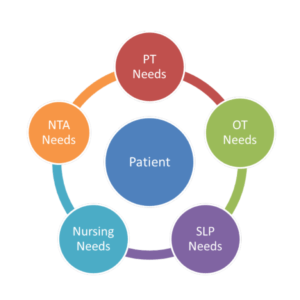Spending cuts loom for Medicare/Medicaid
But possible reductions in Medicaid provider assessments and other potential cuts resulting from the frenzy to reduce the federal budget deficit may be only part of the problem that gives the industry a full-blown migraine this year. The Office of Inspector General (OIG) in the U.S. Department of Health and Human Services (HHS) has issued its work plan for 2011, and nursing facilities are slated for a good deal of attention.
In mid-February, Mark Parkinson, president and CEO of the American Health Care Association and National Center for Assisted Living, issued a statement warning that President Obama’s FY 2012 budget proposal to cut Medicaid funding “is the wrong move,” given the increasing numbers of nursing home patients expected as Baby Boomers continue to age.
“As states across the country face unprecedented fiscal crises, we struggle with the recommended loss of $18.4 billion in critical Medicaid funding over the next decade,” said Parkinson. “Provider assessments are vital tools that allow states to voluntarily leverage funding to care for the economically disadvantaged and medically frail.”
But the cuts requested in Obama’s budget may well be dwarfed by reductions demanded by the Republican-controlled House of Representatives, and while the Senate is still controlled by the Democrats, the GOP has increased clout there. So the coming months likely will see ongoing demands for even deeper spending reductions.
While that battle is being waged, the watchdog agency at HHS will be looking for every possible way to reduce unnecessary and wasteful spending in both the Medicare and Medicaid programs. Its work plan lays out specific areas to be analyzed. These include:
Medicare Part A Payments to Skilled Nursing Facilities (SNFs). The OIG will review the extent to which these payments meet coverage requirements. In a prior report, OIG found that patients’ medical records did not support 26% of claims to Resource Utilization Groups (RUGs), representing $542 million in potential overpayments for FY 2012. An analysis of 2009 claims will be made to determine if they were medically necessary, sufficiently documented, and correctly coded.
Medicare Requirements for Quality of Care in SNFs. The OIG will determine the extent to which SNFs (1) developed plans of care based on assessments of beneficiaries, (2) provided services to beneficiaries in accordance with plans of care, and (3) planned for beneficiaries’ discharges.
Assessment of Monitoring of Nursing Home Residents Receiving Atypical Antipsychotic Drugs. Federal regulations require nursing facilities to develop resident care plans based on periodic resident assessments. OIG will examine the extent to which nursing facilities comply with these requirements.
Oversight of Poorly Performing Nursing Homes. OIG will review CMS’ and states’ use of enforcement measures to determine their impact on improving the quality of care that beneficiaries received in poorly performing nursing homes and will evaluate the performance of those facilities.
Hospitalizations of Nursing Home Residents. Because hospitalizations of residents are costly to Medicare and may indicate quality-of-care problems, OIG will review the extent of hospitalizations of Medicare beneficiaries residing in nursing homes. A 2007 OIG study found that 35% of hospitalizations during a SNF stay were caused by poor quality of care or unnecessary fragmentation of services.
Nursing Home Emergency Preparedness and Evacuations During Selected Natural Disasters. OIG will review facilities’ emergency plans and emergency preparedness deficiencies cited by the states to determine their sufficiency and implementation.
Criminal Background Checks for Employees. OIG will determine whether and the extent to which nursing facilities have employed individuals who have criminal convictions. OIG will also review the program of national and state background checks for prospective LTC employees required by the Patient Protection and Affordable Care Act of 2010.
Medicare Part B Services During Non-Part A Nursing Home Stays. OIG will review the extent of Part B services provided to nursing home residents whose stays are not paid for under Medicare’s Part A SNF benefit. OIG will also assess patterns of billing for Part B services among nursing homes and providers.
Hospice Utilization in Nursing Facilities. OIG will review Medicare Part A hospice claims and data, and will examine the characteristics of nursing facilities with high utilization patterns of Medicare hospice care and the characteristics of the hospices that serve them. OIG will also assess the business relationships between nursing facilities and hospices to assess marketing practices and materials of hospices associated with high utilization patterns.
The coming months likely will see ongoing demands for even deeper spending reductions.
Services Provided to Hospice Beneficiaries. OIG will examine services that hospices and nursing facilities provide to hospice beneficiaries residing in nursing homes, including services by hospice-based home health aides. LTL
Bob Gatty has covered governmental developments for the trade and business press for more than 30 years. He is founder and president of G-Net Strategic Communications, Sykesville, Maryland. Long-Term Living 2011 April;60(4):12-13

Robert Gatty has more than 40 years of experience in journalism, politics and business communications and is the founder and president of G-Net Strategic Communications based in Myrtle Beach, South Carolina. He can be reached at bob@gattyedits.com.
Related Articles
Topics: Articles , Medicare/Medicaid











